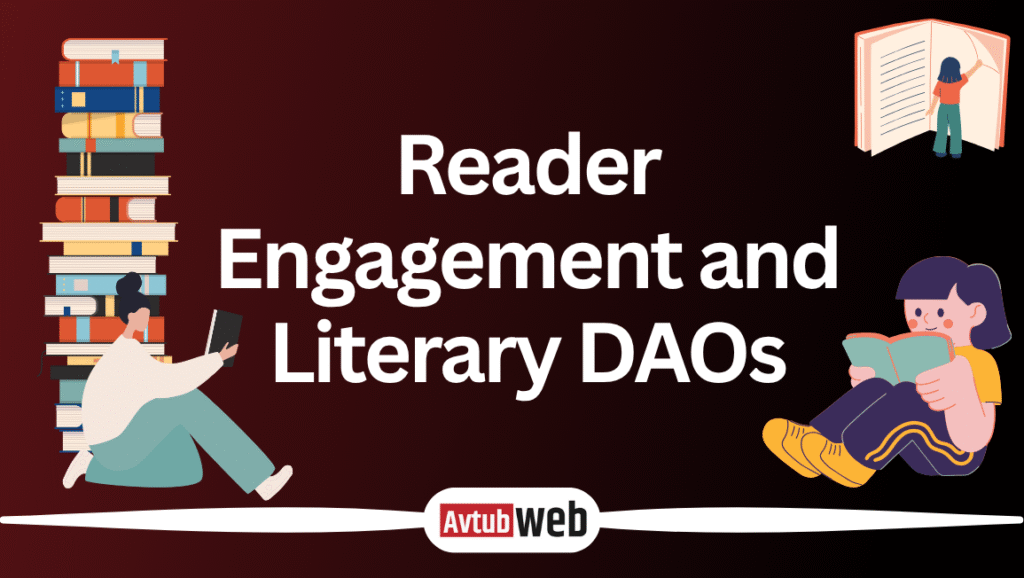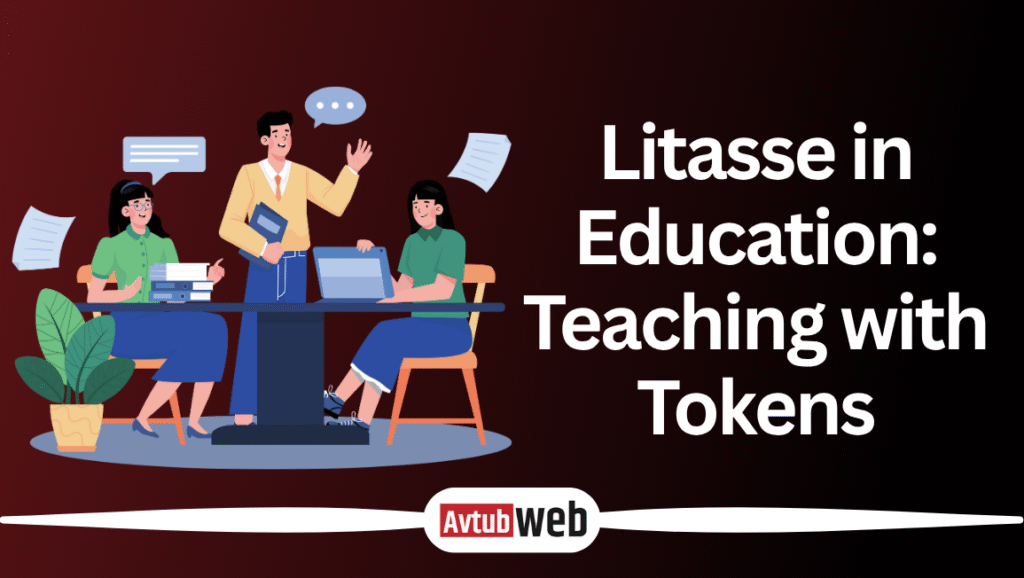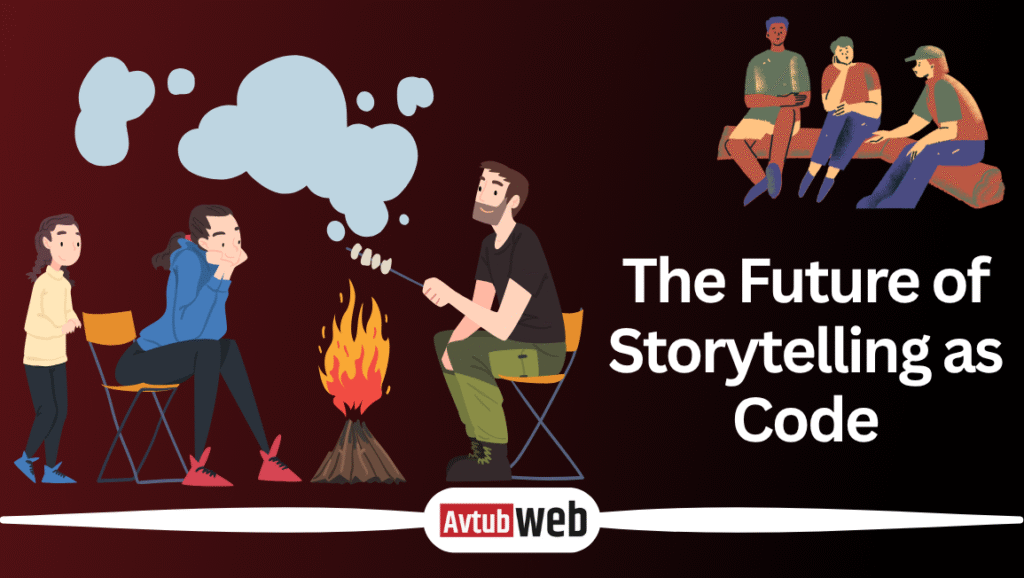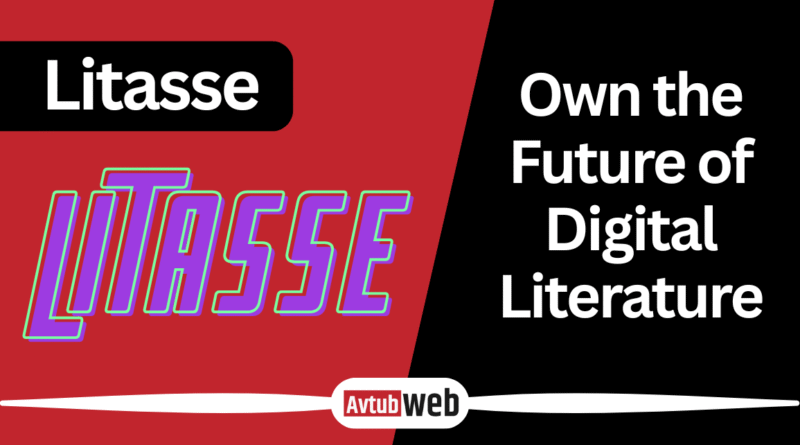Litasse: Own the Future of Digital Literature
“Litasse: Own the Future of Digital Literature” explores how literature is evolving into something more than just storytelling; it’s becoming an asset you can own, sell, or collect. This new frontier blends writing, technology, and ownership in ways we’re only beginning to understand. Through the lens of Litasse, we’ll examine how blockchain is transforming the creation, distribution, and sharing of books. You’ll discover how readers can invest in stories, how writers can earn more from their work, and what all this means for the future of reading and publishing. Let’s dive in.
What Is Litasse and Why Does It Matter
Litasse is a new term that combines “literature” and “asset.” At its core, it’s about turning written works, stories, poems, essays, and band books into digital tokens that people can own. Think of it like collecting a rare book, but in a digital format. What makes Litasse powerful is how it uses blockchain technology to track who owns what and to make sure that the work is original and verifiable.
This matters because it shifts literature from being something that’s just consumed into something that’s owned. Writers can now create limited editions of their work, sell them directly, and even earn money every time their work is resold. Readers get to become early supporters or collectors of writing that may grow in value over time. In short, Litasse brings a new sense of worth to literature, both financially and culturally.
How Litasse Works: Blockchain, NFTs & Smart Contracts
Behind Litasse is blockchain, the same technology that powers cryptocurrencies like Bitcoin and Ethereum. But instead of money, blockchain, in this case, keeps track of digital literature. Each work is minted as an NFT (non-fungible token), which is a unique digital file with built-in proof of ownership.
Smart contracts are part of the magic. These are bits of code that automatically carry out certain actions, like paying the original author a royalty every time the Litasse token is resold. That means writers don’t just get paid once. They can earn income every time their work changes hands.
Also, Litasse can include unlockable content, extras that only the buyer can access, like bonus chapters, author commentary, or artwork. All of this happens securely and transparently on the blockchain.
Litasse vs Traditional Publishing Models
To really understand Litasse, it helps to compare it with traditional publishing. In the usual setup, authors either sign with a publisher or self-publish their work. Either way, books are usually sold once, and the author only earns from that first sale.
With Litasse, the model changes completely. The author can create a limited number of digital editions. These editions can be bought, collected, or resold, just like rare art or vinyl records. Every time that happens, the author can get a cut.
| Feature | Traditional Model | Litasse Model |
| Ownership | Limited (Publisher or buyer) | True ownership via NFT |
| Resale Earnings | None | Yes, via smart contracts |
| Editions | Unlimited copies | Limited tokenized editions |
| Author Control | Often limited | High author control |
| Reader Role | Consumer | Investor, community member |
Case Studies: Early Litasse Experiments
Some early examples of Litasse are already popping up. One is a serialized sci-fi novel called Dust to Data, which is being released chapter by chapter as NFTs. Each chapter includes hidden details, like audio notes from the “author,” who is a character in the story.
Another is Letters from an Unknown, a digital poetry archive that lets readers unlock different versions of the same poem over time. Then there’s Margin Notes, an essay project where buyers can leave their annotations and sell the “commented” version as its edition.
These creative experiments show how Litasse isn’t just a format, it’s a playground for new forms of storytelling and reader interaction.

Reader Engagement and Literary DAOs
One of the most exciting parts of Litasse is how readers can become more than just fans. Through something called a DAO (Decentralized Autonomous Organization), they can become part of the writing process itself.
Imagine a community of readers voting on what direction a story should take. Or readers pooling their tokens to support a sequel. That’s what projects like VerseForge DAO are doing. It lets readers, writers, and curators work together to shape the literature they love.
DAOs give people a real stake in the stories they support. They also break down the old walls between creators and audiences.
Valuing Literary Scarcity in the Digital Age
In the digital world, everything feels infinite. You can copy a PDF a million times. But Litasse reintroduces the idea of scarcity, limited copies, rare editions, and first prints.
This scarcity creates real-world value. Just like collectors treasure first editions of classic books, readers can now collect “first mints” of digital literature. These are provably rare, and over time, they may grow in value.
Scarcity also encourages care. When a reader owns a rare copy of a story, they’re more likely to value it, share it thoughtfully, or even preserve it for future generations.
Aesthetics & Multimedia Features of Litasse
Litasse isn’t just about text. Because it’s digital, it can blend with other art forms. Stories can include animations, background soundscapes, interactive images, or timed releases of content that unfold over days or weeks.
This creates a richer, more immersive reading experience. Imagine a poem that changes as you read it, or a short story that reveals secret messages based on when and where it’s opened.
Accessibility Challenges & Solutions
Despite the excitement, Litasse does face some barriers. Not everyone is comfortable with digital wallets or cryptocurrencies. The technology can feel confusing or exclusive.
Also, environmental concerns come up, since some blockchains use a lot of energy. However, newer systems like Polygon or Solana are much more efficient and affordable.
To help more people access Litasse, platforms are starting to offer easier onboarding, clearer instructions, and even credit card payments. As the tech improves, access will become more equal.
Legal and Copyright Implications
Turning stories into digital assets opens up a lot of legal questions. Who owns the copyright when multiple people are involved in a DAO? Can someone sell a story they didn’t write if they remix or annotate it?
Smart contracts can automate some rights, but not all. The law still hasn’t caught up with tokenized literature. Writers need to be careful about how they license their work, and platforms need to be transparent about rights.
Still, this is an exciting space where law, code, and creativity are learning to work together.

Litasse in Education: Teaching with Tokens
Litasse has the potential to change how literature is taught. Teachers can have students create their own Litasse editions of short stories or poems. Students can analyze how different editions evolve or how audiences respond to them.
This makes literature feel alive, not static. It also introduces students to digital literacy, blockchain technology, and creative ownership, all in one lesson.
Imagine a classroom where students aren’t just writing essays, they’re publishing digital literature to a global audience.
Ethical Questions & Cultural Equity
As with any new platform, there’s a risk that Litasse could become a playground only for those with tech skills or money. That could exclude voices that are already underrepresented in publishing.
There’s also the concern of over-commercializing art, turning every story into a product to be flipped for profit.
To avoid this, the Litasse community must stay focused on inclusion, fairness, and access. Supporting diverse voices, open tools, and free editions can help keep literature human, not just tokenized.
The Sustainability Debate: NFTs & the Environment
One of the loudest criticisms of NFTs is their impact on the environment. Blockchains like Ethereum used to be energy-hungry, but much has changed.
Ethereum’s move to proof-of-stake cut its energy use by over 99%. Other chains, like Tezos and Solana, are also much more sustainable. Still, authors and readers should look into the platforms they use.
Marketplaces and Trading Platforms for Litasse
So, where do you buy or sell Litasse? New marketplaces are emerging that specialize in literary tokens. Some are built for collectors, others for communities.
These platforms often let readers browse by author, genre, rarity, or theme. Some even show the trading history of a work and who owns which version.
It’s still early days, but the infrastructure for a true digital literary economy is starting to take shape.
Tips for Authors: Launching Your Litasse
If you’re a writer and want to try Litasse, start small. Choose a short piece, maybe a poem or essay, and mint a limited number of copies. Set fair prices. Offer something extra to early buyers, like a video reading or a behind-the-scenes draft.
You don’t need to be a tech expert. Many platforms now walk you through the process. The key is to treat it as an experiment. Learn from your audience, and build a deeper connection through ownership.
Litasse gives writers not just a new platform, but a new way to relate to their readers.
Risks, Limitations & What to Watch
Litasse isn’t perfect. There are risks, technical bugs, changing laws, fluctuating values, and ethical questions. It’s possible to lose access to your wallet. It’s also possible for a literary token to be overhyped and lose value.
Writers must also be aware of copyright issues, reader trust, and platform stability. But with thoughtful use, these risks can be managed.
Like any creative revolution, the future of Litasse depends on the people building it.

The Future of Storytelling as Code
Looking ahead, Litasse might be just the beginning. We could see books that rewrite themselves based on reader votes. Stories co-written by humans and AIs. Archives that store every revision a poem ever went through.
Literature could become more dynamic, more interactive, and more community-owned than ever before. By owning literature in new ways, we might also learn to value it more deeply.
Frequently Asked Questions (FAQs)
1. What is Litasse?
Litasse is a new way to turn literature, like books, poems, or essays, into digital assets that people can own, sell, or collect using blockchain technology.
2. How does Litasse benefit authors?
Authors can earn not only from the first sale of their work but also from resales through automatic royalties. They also keep more control over how their work is shared and monetized.
3. Can readers own a piece of literature with Litasse?
Yes. Readers who buy a Litasse token own a verified digital edition of a work, similar to owning a signed first edition in print.
4. Do I need cryptocurrency to buy Litasse tokens?
It depends on the platform. Some require crypto wallets, while others are working on credit card or simple payment options to make things easier.
5. What’s the difference between Litasse and an eBook?
eBooks are endlessly copyable files. Litasse editions are limited, unique, and traceable, making them collectable and resellable, like digital art.
6. Is Litasse safe and legal?
Yes, generally, but it’s important to use trusted platforms. Legal questions about copyright, resale, and smart contracts are still evolving, so creators should stay informed.
7. Can I create my own Litasse as a writer?
Absolutely. Writers can mint their works as NFTs and sell them through emerging Litasse platforms that guide you through the process.
8. Are there risks with buying or selling Litasse?
Like any digital asset, values can rise or fall. Technical issues, scams, and legal gray areas are also things to watch for, especially for beginners.
9. What kinds of works can become Litasse?
Anything literary: short stories, novels, poetry, essays, journals, even serialized content. Some creators also add visuals, audio, or hidden extras.
10. Will Litasse replace traditional books?
Not likely. Litasse adds a new layer to how we value and share writing, but it won’t replace print or eBooks. It just offers a different experience for those who want ownership and rarity in the digital world.
Conclusion
Litasse is more than just a trend; it’s a bold shift in how we think about literature, creativity, and ownership. By transforming stories into digital assets, Litasse empowers writers to earn more from their work and gives readers a chance to become collectors, collaborators, and community members. While challenges like accessibility and legal questions remain, the potential for deeper engagement, fairer profits, and innovative storytelling is clear. As technology and art continue to blend, Litasse invites us to imagine a future where literature is not only read, but truly owned.



